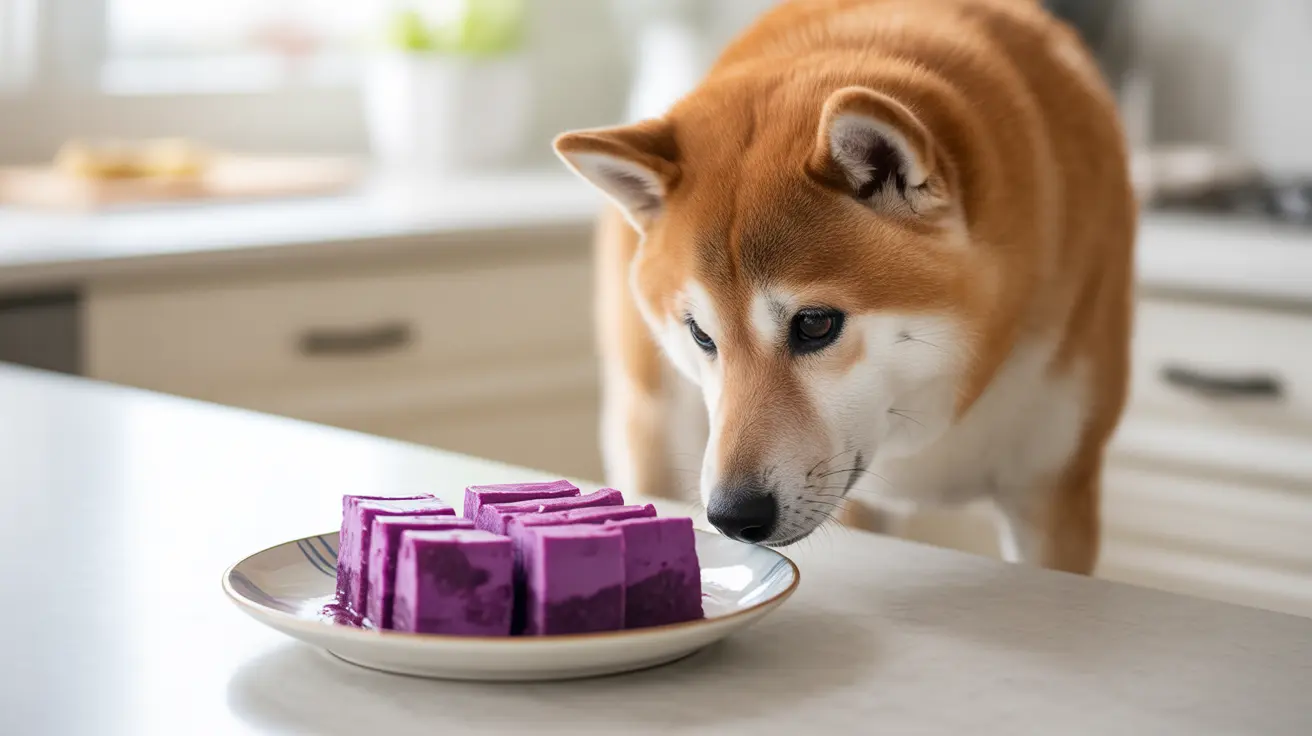Introduction
As pet owners explore diverse and nutritious treats for their furry friends, ube (purple yam) has gained attention as a potential addition to canine diets. This vibrant root vegetable, popular in Filipino cuisine, raises questions about its safety and benefits for dogs. Understanding whether ube is good for dogs requires careful consideration of its nutritional content, preparation methods, and potential risks.
Let's explore everything you need to know about feeding ube to your canine companion, including proper preparation techniques, portion sizes, and important safety considerations.
Understanding Ube and Its Basic Properties
Ube, scientifically known as Dioscorea alata, is a purple-fleshed root vegetable distinct from regular sweet potatoes or taro. Its naturally sweet flavor and striking purple color come from beneficial compounds called anthocyanins, which possess antioxidant properties.
Safety Guidelines for Feeding Ube to Dogs
Proper Preparation Methods
When offering ube to dogs, proper preparation is crucial for safety:
- Always cook thoroughly (boil, steam, or bake)
- Serve plain without seasonings, oils, or additives
- Cool completely before feeding
- Cut into appropriate-sized pieces to prevent choking
Recommended Serving Sizes
Portion control is essential when feeding ube to dogs:
- Small dogs: 1-2 teaspoons
- Medium dogs: 1-2 tablespoons
- Large dogs: 2-3 tablespoons
- Never exceed 10% of daily caloric intake
Nutritional Benefits of Ube for Dogs
When fed appropriately, ube can provide several nutritional benefits:
- Rich in dietary fiber for digestive health
- Contains essential vitamins (A, C, B6)
- Provides minerals including potassium and magnesium
- Offers antioxidant properties from anthocyanins
- Low in fat and suitable for weight management
Potential Risks and Precautions
Signs of Adverse Reactions
Watch for these potential warning signs after feeding ube:
- Vomiting or diarrhea
- Lethargy or unusual behavior
- Allergic reactions (scratching, swelling)
- Digestive discomfort
- Loss of appetite
Special Considerations
Some dogs should avoid ube or require veterinary approval first:
- Diabetic dogs
- Overweight dogs
- Dogs with sensitive stomachs
- Puppies under 6 months
- Dogs with known food allergies
Frequently Asked Questions
Is ube (purple yam) safe for dogs to eat, and how should it be prepared?
Yes, ube is safe for dogs when properly cooked and served plain. Always boil, steam, or bake the ube without any seasonings or additives, and ensure it's completely cooled before serving.
What are the nutritional benefits of feeding ube to dogs?
Ube provides dietary fiber, vitamins A, C, and B6, minerals like potassium and magnesium, and beneficial antioxidants. These nutrients support digestive health, immune function, and overall wellness.
Can ube cause allergic reactions or digestive issues in dogs?
While rare, some dogs may experience allergic reactions or digestive issues. Start with small amounts and monitor for symptoms like vomiting, diarrhea, itching, or lethargy. Discontinue use if any adverse reactions occur.
How much ube can I safely give my dog as a treat?
Treat portions should be based on your dog's size: small dogs (1-2 teaspoons), medium dogs (1-2 tablespoons), and large dogs (2-3 tablespoons). Never exceed 10% of daily caloric intake from treats.
Should dogs with diabetes or obesity eat ube, and what precautions should I take?
Dogs with diabetes or obesity should avoid ube or consume it only with veterinary approval due to its carbohydrate content. If approved, serve in smaller portions and monitor blood sugar levels carefully.
Conclusion
When properly prepared and served in moderation, ube can be a safe and nutritious treat for most dogs. Always introduce new foods gradually, monitor for adverse reactions, and consult your veterinarian if you have specific concerns about your dog's diet. Remember that while ube offers various health benefits, it should complement, not replace, your dog's regular balanced diet.






